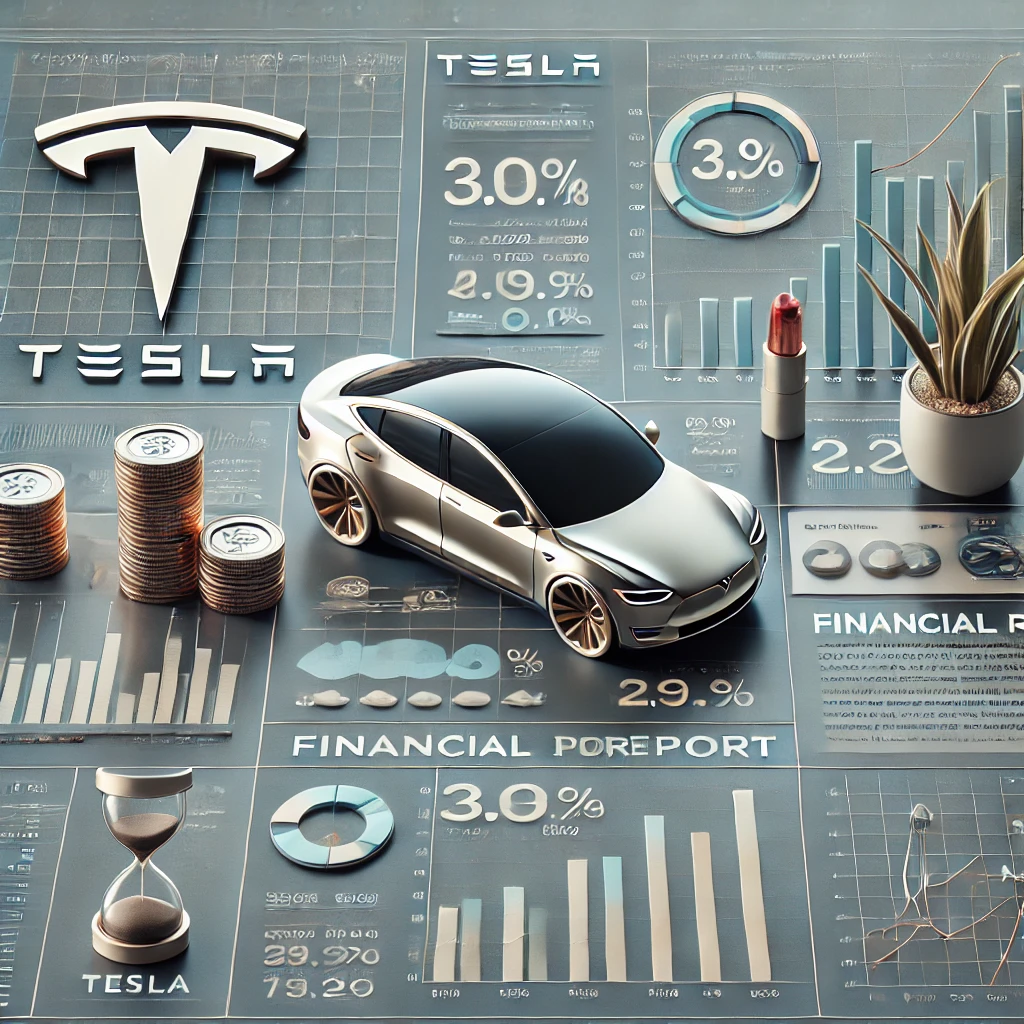
Tesla Stock: An In-Depth Look at TSLA’s Market Performance
Tesla (TSLA) has remained one of the most watched stocks globally due to its disruptive innovation in the electric vehicle (EV) and renewable energy markets. Tesla’s stock, often a bellwether for the tech-driven, high-growth sector, demonstrates dynamic performance patterns influenced by market sentiment, product launches, earnings reports, and the macroeconomic climate.
This guide delves into Tesla’s current stock price trends, key factors affecting its valuation, recent financial performance, and considerations for potential investors.
1. The Evolution of Tesla Stock Price
Tesla’s journey from a speculative startup to an industry giant has been reflected in its stock performance over the years. Initially met with skepticism, Tesla’s stock saw a substantial rise once it proved its ability to mass-produce electric vehicles. This transformation has been driven by both a cult-like investor following and significant growth in the EV sector.
As of Q3 2024, Tesla’s stock has seen a combination of gains and corrections, largely influenced by quarterly earnings and industry developments. Notably, following the Q3 earnings report, Tesla’s stock experienced a boost due to surpassing EPS expectations, reflecting investor confidence in its profitability despite revenue misses.
Key Milestones in Tesla’s Stock History:
- 2020-2021: Marked a monumental surge due to EV popularity and Tesla’s inclusion in the S&P 500.
- 2022: Faced a downturn as economic pressures and rising competition led to increased volatility.
- 2024: Remains on a growth trajectory, despite challenges in the global EV market.
2. Factors Influencing Tesla Stock Market Performance
Several factors consistently impact Tesla’s stock price:
a) Quarterly Earnings and Revenue Growth
Tesla’s financial performance remains a core influence on its stock price. Quarterly earnings, such as Q3 2024’s EPS of $0.72 per share (outperforming projections), often result in immediate stock price movements. However, Tesla missed on revenue, reporting $25.2 billion against Wall Street’s expectation of $25.47 billion, which slightly tempered investor expectations.
b) Production and Delivery Targets
Tesla’s production output is closely monitored. Achieving or missing these targets directly impacts investor confidence and the stock’s short-term performance. For instance, Tesla’s Cybertruck production ramp-up and its ability to meet demand for Model Y have become focal points in recent quarters.
c) New Product Innovations
Tesla’s ongoing innovation, including advancements in self-driving technology, is pivotal in shaping investor sentiment. Innovations in Tesla’s Full Self-Driving (FSD) beta and AI-driven manufacturing provide growth potential and keep the stock attractive to technology-focused investors.
d) Economic and Market Trends
Tesla’s stock, like other growth stocks, is sensitive to broader economic factors, such as inflation, interest rate hikes, and geopolitical tensions. Higher interest rates can slow growth, making it more costly for consumers to finance Tesla’s EVs and impacting demand.
e) Competitive Landscape in EVs
Tesla now faces intense competition from both traditional automakers (e.g., Ford, GM) and EV-focused brands like Rivian and Lucid. Market share battles in the EV space influence Tesla’s valuation, as investors assess whether it can maintain its industry leadership.

3. Tesla’s Stock Exchange Performance: NASDAQ and Global Markets
Tesla is listed on the NASDAQ under TSLA and remains a highly traded stock on U.S. markets, as well as international platforms. Investors view TSLA as a benchmark for the EV and green energy sectors, drawing substantial interest from both retail and institutional investors.
Tesla’s performance on the stock exchange reflects its brand power and market influence. Frequent stock splits, such as those in recent years, have made shares accessible to smaller investors, broadening its ownership base.
4. Tesla Financials and Stock Price Analysis
Tesla’s financial metrics are fundamental to analyzing its stock performance. The company’s impressive gross margin growth, especially the 19.8% margin reported in Q3 2024, illustrates Tesla’s cost efficiency—a crucial factor for sustaining profitability as it scales production.
Recent Financial Highlights:
- Revenue Growth: Despite a revenue miss in Q3, Tesla has maintained strong annual growth in revenue, with steady increases in production capacity.
- Profitability: Tesla’s ability to post positive earnings while scaling production has set it apart from other EV startups, which often operate at a loss.
- Capital Investments: Tesla’s spending on R&D and infrastructure, including new factories, suggests a commitment to long-term growth.
Tesla’s financial health and ability to innovate remain attractive to investors seeking long-term growth in the technology and automotive industries.
5. Investor Considerations: Pros and Cons of Tesla Stock
Tesla’s stock attracts both ardent supporters and cautious critics. Understanding the pros and cons can guide investor decisions based on their risk tolerance and investment goals.
Advantages of Investing in Tesla:
- Growth Potential: Tesla’s leadership in EV and renewable energy gives it a unique advantage in two high-growth industries.
- Brand Value and Innovation: The Tesla brand, synonymous with innovation, attracts loyal customers and creates resilience against competitive pressure.
- Sustainability Trends: Growing environmental awareness and supportive policies for clean energy create a favorable macroeconomic environment for Tesla.
Risks Associated with Tesla Stock:
- High Valuation Ratios: Tesla’s stock valuation remains elevated, leading to concerns about overvaluation relative to traditional automakers.
- Market Volatility: Tesla’s stock is highly sensitive to news, market conditions, and economic changes, making it susceptible to sudden shifts.
- Competitive Pressure: As more automakers invest in EVs, Tesla’s market share and margins may face pressure, particularly in saturated markets like North America and Europe.
6. How to Buy Tesla Stock: A Guide for New Investors
For those new to investing, buying Tesla stock involves the following steps:
- Choose a Broker: Platforms like Charles Schwab, Fidelity, or Robinhood make it easy to buy Tesla stock.
- Deposit Funds: Ensure your account has sufficient funds for the purchase.
- Place an Order: You can purchase TSLA shares at the market price or set a limit order to buy at a specific price.
- Monitor Your Investment: Use stock-tracking tools and stay updated on Tesla news to make informed decisions.
7. Future Outlook: What’s Next for Tesla Stock?
The future of Tesla’s stock depends on several evolving factors. Key aspects of its long-term outlook include:
- Autonomous Driving: Tesla’s advancements in self-driving technology, particularly the Full Self-Driving (FSD) feature, could revolutionize transportation. Success in this area may increase revenue streams, but regulatory and technical hurdles remain.
- Expansion into Renewable Energy: Tesla’s solar and energy storage segments have growth potential, especially as global demand for sustainable energy rises.
- Global Market Expansion: Tesla’s planned entry into developing markets and continued growth in Europe and Asia could further drive revenue and production goals.
- Model Diversity: As Tesla expands its model lineup, including the Cybertruck, it appeals to broader customer segments, which may increase market share.
Tesla’s growth potential, product development, and adaptability to market demands will shape its stock’s long-term performance.
8. Tesla Stock Prediction for 2025 and Beyond
While specific stock predictions are speculative, analysts generally anticipate continued growth if Tesla maintains its innovation pace and market share in the EV industry. Key predictions include:
- Stock Growth: If Tesla successfully ramps up production and new product launches, it may achieve double-digit annual growth rates.
- Revenue Targets: With ambitious production goals, Tesla’s revenue is expected to grow as it captures new markets.
- Valuation Trends: Some analysts predict a more stable valuation as Tesla’s metrics align closer with industry standards, particularly as the company matures.

FAQs: Common Questions on Tesla Stock
1. Why is Tesla Stock So Volatile?
Tesla’s stock volatility is largely due to its high valuation, investor speculation, and sensitivity to earnings reports and product news.
2. Is Tesla Stock a Good Long-Term Investment?
Many consider Tesla a solid long-term investment due to its leadership in EVs and sustainable technology, but it carries risks associated with market competition and economic sensitivity.
3. How Often Does Tesla Pay Dividends?
Tesla does not currently pay dividends, as it reinvests earnings into growth initiatives.
Tesla stock remains a popular choice for investors who believe in the future of EVs and sustainable technology. Despite its volatility and high valuation, Tesla’s strong brand, product innovation, and market influence make it a compelling option for growth-focused investors.
For those looking to buy Tesla stock, staying informed on market trends, earnings reports, and industry developments is crucial. As the company evolves and competes in a rapidly changing market, Tesla’s stock will likely continue to reflect both its achievements and challenges.
Visit our other website: https://synergypublish.com
